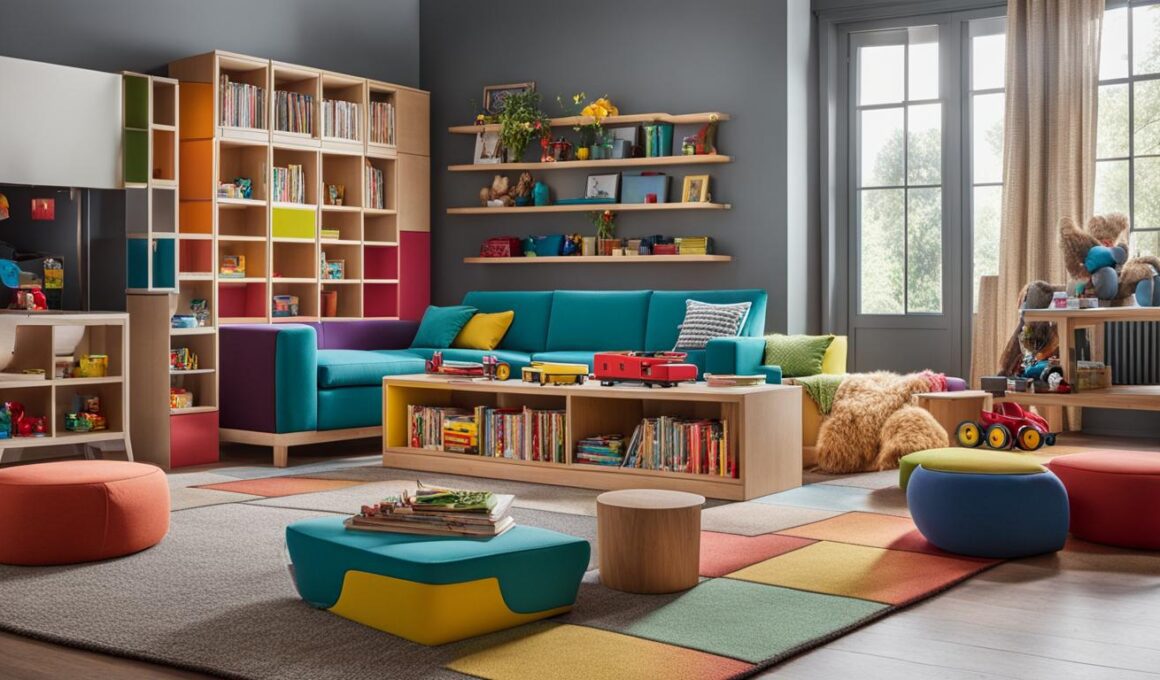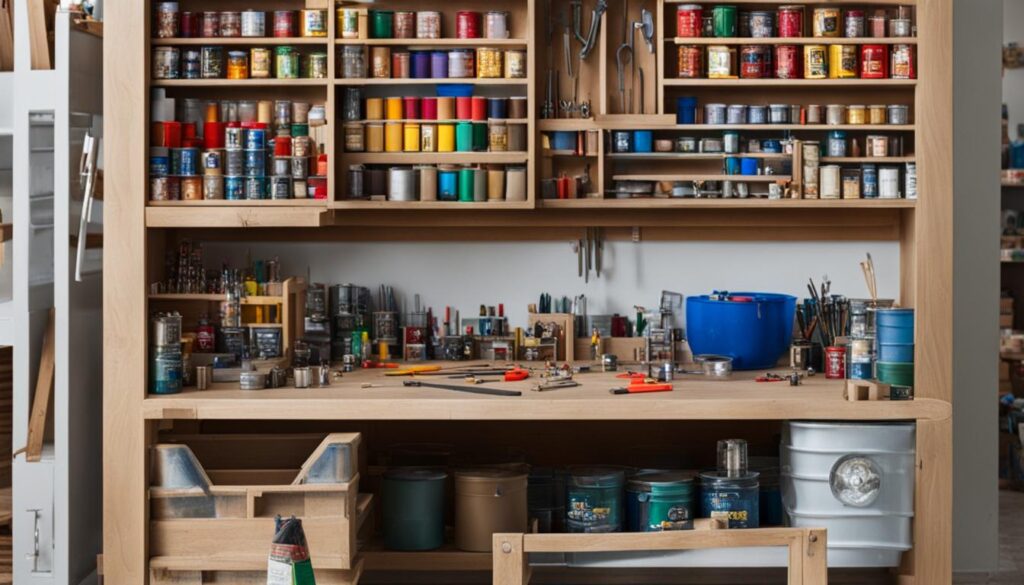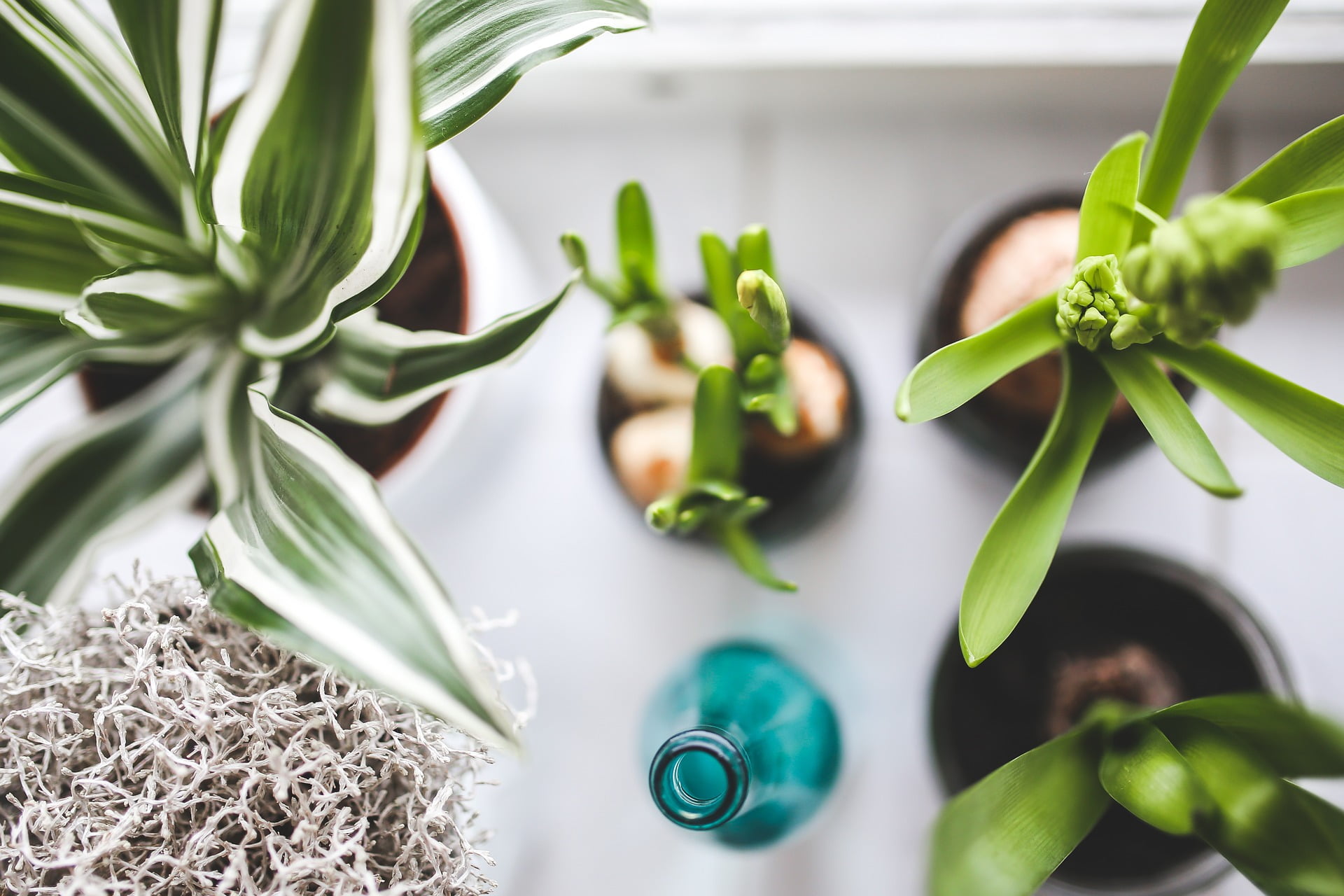Updating your home to make it child-friendly doesn’t have to be a daunting task. By involving your children in the process, you can create a safe and welcoming environment for the whole family. Whether it’s simple projects like painting and yard work or more advanced tasks like bathroom updates and carpet replacement, there are plenty of ways to transform your space while engaging your kids in the process.
Post Summary
- Get your kids involved in home improvement projects to create a safer and more welcoming environment.
- Simple tasks like painting and yard work can be great ways to engage your children.
- As children grow older, they can handle more intermediate and advanced projects.
- Updating your home’s exterior with landscaping can enhance curb appeal and involve your kids.
- Home improvement projects with children not only teach valuable skills but also create lasting memories.
Simple Home Improvement Projects for Kids
Getting your kids involved in home improvement projects not only helps you get the work done, but also creates opportunities for learning and bonding. There are plenty of simple projects that kids can participate in, allowing them to develop valuable skills while having fun. Here are some family-friendly home improvement ideas that are perfect for children:
1. Planting Seedlings
Encourage your kids to develop a green thumb by involving them in planting seedlings. Whether it’s flowers, herbs, or vegetables, this project allows children to learn about nature, patience, and responsibility. Show them how to prepare the soil, sow the seeds, and care for the plants. They will take pride in watching their seedlings grow into beautiful plants.
2. Painting the Mailbox
“I love helping my parents paint the mailbox. It’s a small and easy task, but it makes a big difference in making our home look nicer.” – Emily, 9 years old
Give your kids the opportunity to express their creativity by letting them paint the mailbox. Provide them with child-friendly paint and brushes, and let them choose the colors. This project allows children to take ownership of a small part of the house and adds a personal touch to your home’s curb appeal. Plus, it’s a fun and rewarding activity for kids of all ages.
3. Sweeping the Patio
Teach your children about the importance of maintaining a clean outdoor space by involving them in sweeping the patio. Show them how to use a broom and dustpan to remove leaves, dirt, and debris. This simple task not only keeps your patio looking tidy but also instills a sense of responsibility in your kids. It’s a great way to get some fresh air and exercise while spending quality time together.
| Project | Skills Developed |
|---|---|
| Planting Seedlings | Nature knowledge, responsibility |
| Painting the Mailbox | Creativity, ownership, fine motor skills |
| Sweeping the Patio | Cleanliness, responsibility |
By involving your kids in these simple home improvement projects, you not only create a safe and welcoming environment but also foster their creativity, responsibility, and sense of ownership. Plus, it’s a great way to spend quality time together as a family and create lasting memories.
Intermediate Home Improvement Projects for Kids
As children grow older, they are capable of taking on more intermediate home improvement projects. These DIY tasks not only provide an opportunity for them to learn new skills but also foster a sense of confidence and accomplishment. With proper supervision and guidance, your kids can take on projects like practicing with basic tools, hanging pictures, changing air filters, and even assembling furniture.
Encouraging your children to engage in these projects will not only help them develop practical skills but also promote a sense of ownership and responsibility for the home. By actively participating in home improvement tasks, they will gain a deeper appreciation for the effort and care required to maintain a household.
“Engaging children in intermediate home improvement projects empowers them to become more self-reliant and capable individuals.”
One example of an intermediate project is practicing with basic tools. This can involve using a hammer, screwdriver, and other hand tools under parental supervision. By allowing kids to handle tools safely, they gain valuable hands-on experience and become more comfortable working with them. This skill will be beneficial as they continue to tackle more advanced projects in the future.
| Intermediate Home Improvement Projects for Kids | Skills Developed |
|---|---|
| Practicing with basic tools | Hand-eye coordination, tool handling, problem-solving |
| Hanging pictures | Measuring, leveling, attention to detail |
| Changing air filters | Understanding HVAC systems, maintenance skills |
| Assembling furniture | Following instructions, spatial awareness |
By involving your children in these intermediate home improvement projects, you are not only fostering their personal growth but also creating opportunities for quality family time. Working together on these tasks provides an opportunity for bonding and shared experiences, strengthening the family unit.
So, consider involving your kids in intermediate home improvement projects and witness their growth as they develop practical skills, gain confidence, and contribute to making your home a better place for the whole family.
Advanced Home Improvement Projects for Kids
As your children grow older and gain more skills and experience, they can take on advanced home improvement projects. These projects not only provide an opportunity for your kids to learn new things but also instill a sense of pride and accomplishment. By involving them in these activities, you can foster their independence and enhance their problem-solving abilities.
One advanced project that older children can handle is painting the home’s exterior. This task requires attention to detail and precision, and it allows your kids to showcase their creativity. Additionally, they can learn about the importance of proper surface preparation and the correct use of painting tools.
Another advanced project suitable for older children is fixing leaky faucets. This task introduces them to basic plumbing skills and can save you money on water bills. By teaching your kids how to identify and repair leaks, you empower them to take care of their own living spaces in the future.
Bathroom Renovation Checklist
- Assess the existing bathroom layout and identify what needs to be changed.
- Create a budget and determine the scope of the renovation project.
- Research and select suitable fixtures, materials, and finishes.
- Prepare the necessary tools and equipment for the renovation.
- Demolish and remove any existing fixtures or surfaces.
- Install new plumbing and electrical systems if needed.
- Build or install new bathroom furniture and fixtures.
- Complete the finishing touches, such as painting and installing accessories.
- Conduct a thorough clean-up and inspection before using the renovated bathroom.
With proper supervision and guidance, these advanced home improvement projects can be a great learning experience for your children. They will not only develop practical skills but also gain a sense of accomplishment and responsibility. Remember to prioritize safety and provide clear instructions to ensure successful outcomes.
Updating Your Home’s Exterior
When it comes to improving your home’s overall appearance, updating the exterior can make a significant impact. By focusing on landscaping and enhancing curb appeal, you can create a welcoming and visually appealing environment for your family and visitors. Involving your children in these projects not only teaches them about nature and responsibility but also allows them to take pride in their contribution to the home’s aesthetic.
The Power of Landscaping
Landscaping plays a crucial role in updating your home’s exterior. By carefully selecting and arranging plants, flowers, and trees, you can transform your front yard into an inviting space. Consider creating a focal point, such as a flower bed or a small garden, to add visual interest. Encourage your children to assist with planting and maintaining these areas, allowing them to develop a connection with nature and learn valuable gardening skills.
Additionally, incorporating hardscaping elements like pathways, stepping stones, or a patio can add depth and functionality to your outdoor space. These features not only enhance the aesthetic appeal but also provide opportunities for family activities and gatherings. You can involve your children in the decision-making process, allowing them to express their creativity and preferences while contributing to the overall design.
Enhancing Curb Appeal
Curb appeal refers to the attractiveness of your home’s exterior when viewed from the street. Improving curb appeal not only makes your home stand out but also increases its value. One simple way to enhance curb appeal is by maintaining a well-manicured front lawn. Encourage your children to help with mowing the lawn, pulling weeds, and raking leaves. This not only teaches them about responsibility but also fosters a sense of pride and ownership in their home.
Other ways to enhance curb appeal include painting the front door, updating the outdoor lighting fixtures, and adding decorative elements like a welcome mat or potted plants. These small touches can make a big difference in creating a warm and inviting entryway.
| Landscaping Tips | Curb Appeal Enhancements |
|---|---|
| Choose native plants that are well-suited to your climate and require minimal maintenance. | Paint the front door a bold color to make a statement. |
| Incorporate a variety of textures and colors in your landscaping design to add visual interest. | Upgrade outdoor lighting fixtures for a more modern and polished look. |
| Consider adding an outdoor seating area or fire pit for added functionality and enjoyment. | Add decorative elements like a welcome mat, potted plants, or hanging baskets. |
Updating your home’s exterior is an opportunity to involve your children in a meaningful and educational project. By combining their enthusiasm and creativity with your guidance, you can create a beautiful and welcoming space that reflects your family’s style and values.
Conclusion
When it comes to child-friendly home improvements, involving your kids is not only a practical choice but also a fantastic opportunity for family bonding. By including your children in various projects, you can create a safer and more welcoming environment for everyone.
Remember, it’s not just about the end result; it’s about the process. Whether you’re tackling simple tasks like planting flowers or more advanced projects like painting the home’s exterior, these experiences will teach your children valuable skills and instill a sense of responsibility for their surroundings.
Moreover, involving your kids in home improvements can be a lot of fun and create lasting memories. As they actively participate, they’ll feel a sense of accomplishment and pride in the work they contribute to making the house a better place.
So, don’t miss out on the opportunity to turn your home improvement projects into meaningful family experiences. Embrace the chance to involve your kids, foster family bonding, and create a child-friendly home that everyone can enjoy!
FAQ
How can I involve my children in home improvement projects?
You can involve your children in home improvement projects by assigning them age-appropriate tasks like washing the car, planting seedlings, sweeping the patio, or painting the mailbox. As they grow older, they can handle more intermediate projects like hanging pictures or assembling furniture. For older children, advanced projects like painting the home’s exterior or fixing leaky faucets can be tackled with supervision and guidance.
What are some simple home improvement projects that kids can participate in?
Simple home improvement projects that kids can participate in include washing the car, planting seedlings, sweeping the patio, and painting the mailbox. These tasks are easy for children to handle and teach them valuable skills and responsibility.
What are some examples of intermediate home improvement projects for kids?
Intermediate home improvement projects for kids include practicing with basic tools, hanging pictures, changing air filters, and assembling furniture. These projects give kids the opportunity to learn new skills and gain confidence in their abilities.
What are some examples of advanced home improvement projects for kids?
Advanced home improvement projects for kids may include painting the home’s exterior, cleaning gutters, power washing the patio, and fixing leaky faucets. These projects require more skill and knowledge, making them suitable for older children who have experience with basic home repairs.
How can children contribute to updating the home’s exterior?
Children can contribute to updating the home’s exterior by tasks like planting flowers, trimming trees, installing a fountain or pond, and maintaining the front lawn. Involving your kids in these projects not only enhances curb appeal but also fosters a sense of ownership and responsibility for the home’s overall appearance.








